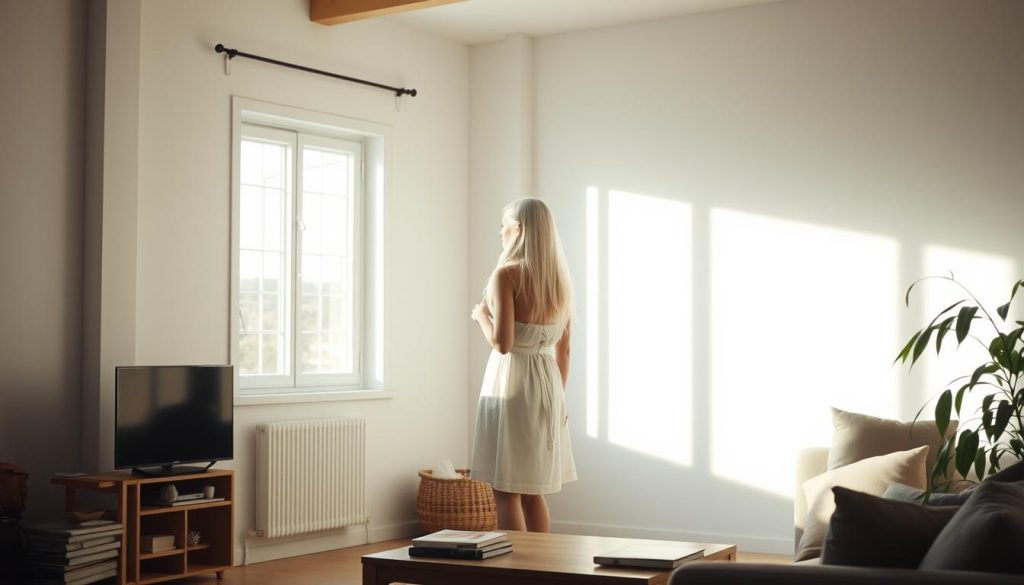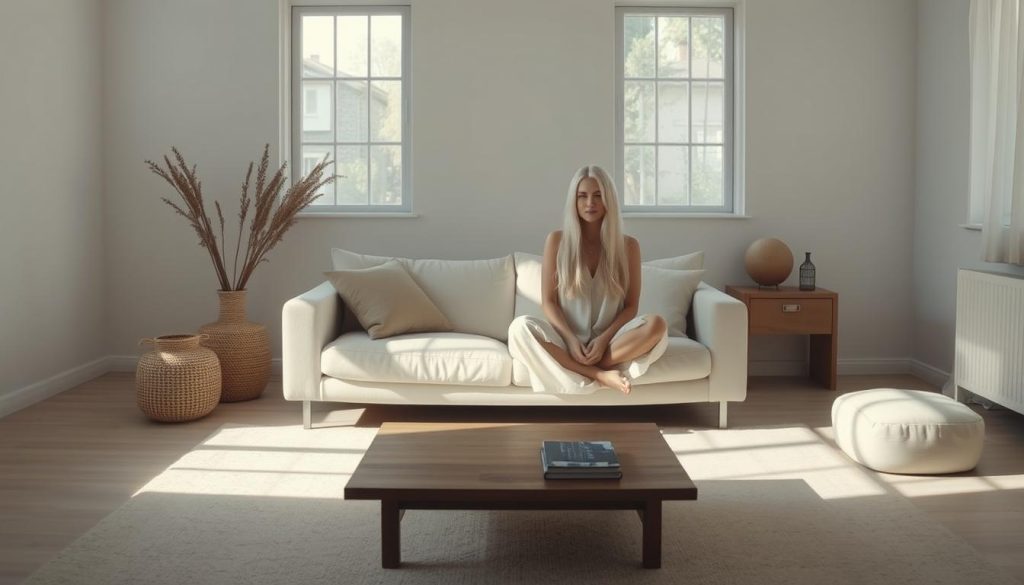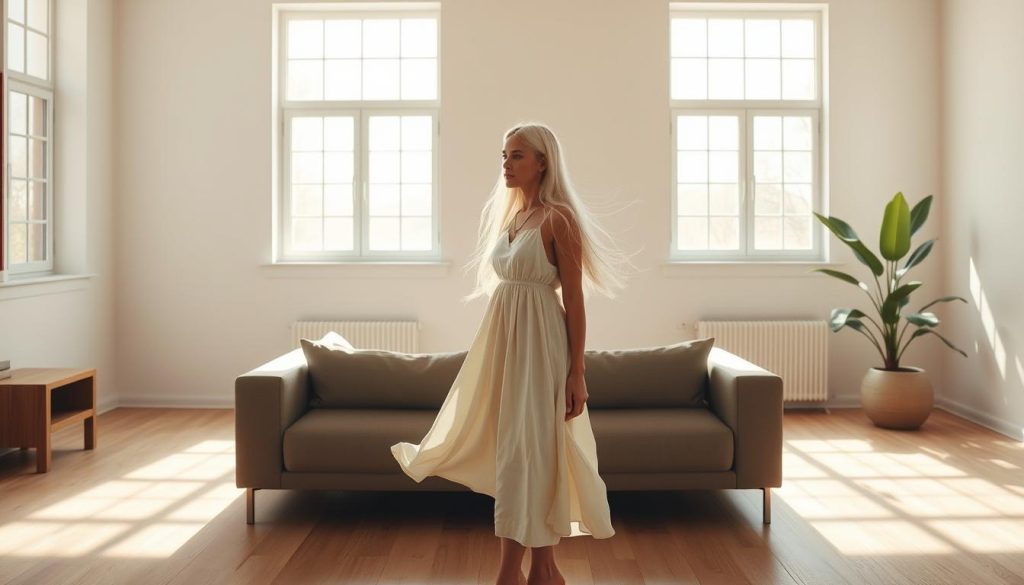Do you ever wonder if the relaxed, lived-in vibe of your home is actually a secret superpower — not a mess to fix?
I’m here to cheer you on! You want a lighter way to live, and messy minimalism proves you can enjoy less without policing every corner.
In this short guide, I’ll show a practical way to make your home support your life so you reclaim time and energy fast! You’ll learn to edit what you own with intention and shift from “always tidy” to “easily tidied.”
No rigid rules, no shame — just small wins that add up. I’ll point out seven real signs you’re already on the path and give quick, doable examples you can try tonight to protect your peace.
Key Takeaways
- You can enjoy a lived-in home while keeping calm and focused.
- Edit with purpose to free up more time for what matters.
- Small daily resets beat marathon cleaning sessions every week.
- Recognize signs you’re practicing this way of living already.
- Simple boundaries and quick habits protect your energy and life.
Why Messy Minimalism Is Having a Moment Right Now
People are trading perfection for presence, and that change is reshaping how we live at home.
Over the last ten years, minimalism grew from a niche trend into a mainstream idea. But in recent years it’s evolved again!
Now more folks want a realistic way to keep life moving. They value time with family over a picture-perfect space. That shift is practical and kind.
“My home is messy, but the way I am spending my time is the right way for me at this stage of my life.”
This quote signals a bigger move: people and pros alike are saying it’s OK to choose rest and connection.
- Flexibility wins: mess happens when life is full.
- Grace over guilt: you protect time for what matters.
- Resilience beats perfection: fewer items mean faster resets.
| Trend | What Changed | Benefit |
|---|---|---|
| Style to Support | Less gloss, more use | Homes that bounce back fast |
| Perfection to Presence | Time prioritized over tidiness | More connection and rest |
| Rules to Grace | Flexible habits replace rigid routines | Lower stress, sustainable habits |
Messy Minimalism
Think of this as a kinder take on less: practical, forgiving, and built for real days! It values function over photos. It values the comfort of a lived space over a staged scene.
What it is
Rachelle Crawford calls this a grace-based approach that measures how your space serves your life, not how it looks. You edit items to match your season. You right-size belongings so the home works for you.

From “always tidy” to “easily tidied”
This shift is simple: aim for quick resets, not endless maintenance. Fewer decisions, fewer piles, more time for people and play.
Marie Kondo’s evolution
“My home is messy, but the way I am spending my time is the right way for me at this stage of my life.”
Her point echoes the idea that minimalism does not mean always tidy. It means your spaces clear fast and come back to calm without draining your energy.
- Focus on feel: calm, clarity, and breathing room.
- Edit by season: keep stuff that serves your current stage.
- Design rhythms: simple habits win over perfection.
Seven subtle signs you already live like a minimalist (even if your home looks lived-in)
You may not wear the label, but your habits might be quietly shaping a simpler life. These signs show how you protect energy, time, and joy without chasing a magazine-perfect space!

Your mess is contained by boundaries
You set small zones — a rug for projects or a bin by the couch. The classic “Lego Lab” keeps creations on a rug overnight so paths stay clear and stress stays low.
Resets are faster because there’s less stuff
Your rooms can look busy and still bounce back fast. Fewer items mean quicker pick-ups and more reclaimed time each evening!
You choose people over appearance
You value chats, dinners, and play over a photo-ready room. That focus on people is exactly what many minimalists do.
You declutter by season and stage
Items come and go as life changes. You edit when kids grow or routines shift because there’s no final finish line — just steady progress.
You ignore perfection and comparison
You ask, “Does this serve my life?” and skip the feed-driven chase. This mindset beats styling for strangers every time.
Your “right number” flexes
More towels during sports, fewer mugs when you realize six is fine. Your counts move with your life, not a rigid rule.
Editing comes before organizing
Clutter raises your stress, so you remove first and label later. A smaller pile beats a tidy bin full of things you never use!
- Two or three of these fit you? You’re already on the path, whether you call yourself a minimalist or not.
Decluttering for real life: practical ways messy minimalists reduce clutter
Let’s make decluttering practical so your home supports how you live, not how it looks. I’ll give clear, doable steps you can use today!
Create artificial boundaries for active projects and kid zones
Start with simple lines: a taped square for puzzles, a basket for art, or a tray for incoming mail. These zones keep projects handy without taking over your rooms.
Expect the “worse before better” phase—and see it as progress
Heavy-duty decluttering often looks chaotic at first. Seeing a bigger mess means you pulled everything out. That mess is proof you’re clearing backlog and removing mass from the equation!
- Decide fast: keep, donate, recycle, trash—speed protects your time.
- Edit before you organize: don’t buy bins for things you won’t keep.
- Give every kept item a home: future you will thank you.
- Reduce duplicates: most just-in-case stuff adds invisible weight to your life.
| Step | Action | Benefit |
|---|---|---|
| Boundaries | Designate project zones | Limits spread and preserves living space |
| Quick decisions | Sort with speed | Less overwhelm, more momentum |
| Edit first | Remove mass, then store | Smaller stash to maintain |
Minimalism as a guardrail, not a destination
See minimalism as a gentle guardrail that keeps daily choices simple, not as a place you must arrive. It helps you protect what matters: your time, your calm, your life.
Use simple rules to protect your time and home (not punish yourself)
Pick two or three easy rules that actually help you. Try “one in, one out” or a “24-hour pause” before big buys. These small habits stop clutter from growing and save you time each day!
Measure success by ease of living, not how minimalist your space looks
Success is practical. Find your keys fast. Clear the sink in minutes. Enjoy a calm morning. That is progress.
| Rule | What it protects | Quick win |
|---|---|---|
| One in, one out | Less buildup | Declutter without drama |
| 24-hour pause | Better buys | Fewer impulse things |
| Two-rule focus | Daily ease | Faster routines at home |
Quick wins to make your home easily tidied
Start with three spots you touch every day and watch ease spread! Targeted moves give fast relief and build momentum.
Target high-impact hotspots: dishes, entryway, laundry flow
Clear the sink and run the dishwasher nightly—this one habit resets your morning energy and keeps mess from multiplying.
Streamline the entry: one hook per person, a single landing spot for keys, and a small donate bin to move clutter quickly.
Fix laundry flow with fewer hampers, a defined folding spot, and a “same-day put-away” microhabit to stop pile-ups.
Declutter first, then organize only what remains
Decluttering before storage keeps excess from creeping back. Edit stuff so the systems you build actually work.
- 10-minute evening sweep for surfaces and hotspots.
- Keep a standing outbox so donations leave regularly.
- Minimize duplicates in kitchens and bathrooms for faster resets.
| Hotspot | Action | Benefit |
|---|---|---|
| Dishes | Run dishwasher nightly | Better mornings |
| Entry | One hook + landing spot | Less visual clutter |
| Laundry | Fold same day | Fewer piles |
Over the years, these quick wins add up. You’ll feel calmer, like many minimalists do—without perfection. Try one habit tonight!
Conclusion
Finish strong: small choices today shape an easier tomorrow! Embrace messy minimalism as a tool that protects your time and joy.
Start with one thing at a time. Let your space reflect your season and pick a simple rule that fits your life.
Edit before you organize. A single cleared drawer or shelf is a powerful step toward calmer living and fewer decisions each day.
Decluttering is your power move—give things a home or let them go. These tiny wins add up to steady momentum and more energy for what matters in life.
You’re not chasing perfection. You’re choosing ease. Own it, keep going, and enjoy being one of the many practical minimalists who live freely and well!
Elevate your spiritual journey with Conscious Items’ genuine gemstones, trusted by thousands and backed by a 30-day money-back guarantee. Don’t let these powerful crystals pass you by—stocks are limited, and the perfect one for you is waiting! Visit Conscious Items now to find your crystal match before it’s too late.
If you liked reading this article you will love this article Habits of Healthy Relationships: 10 Keys to Lasting Love: The Ultimate Love Stone for Heart Healing
Morganite Crystal Healing Properties



